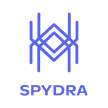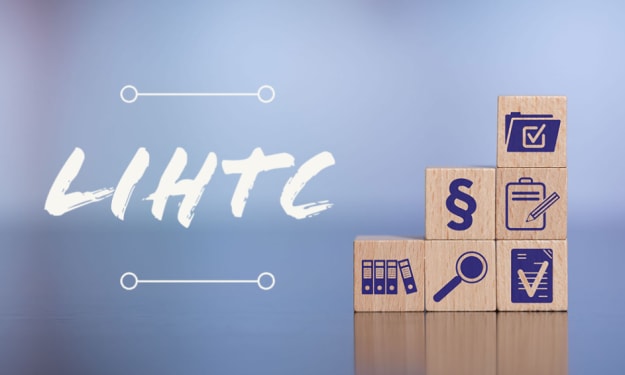
What comes to your mind, when you hear the word 'Real Estate Tokenization'? Lots of questions might pop in about how it works, its significance, whether it's worth investing in, and so on. In this article today, we'll help you understand 'Real Estate Tokenization' in the simplest ways possible. Let's get started!
What is Real Estate Tokenization?
Imagine you have a house. Instead of selling the entire house to one person, you split it into smaller pieces called tokens. Each token represents a share of ownership in the house. These tokens are then stored securely on a digital platform called a blockchain. Real estate tokenization involves digitizing ownership of real estate assets by representing them as tokens on a blockchain. Each token represents a fraction of the property's value, allowing investors to buy and sell these tokens, thereby gaining fractional ownership of the underlying asset.
Origin of Real Estate Tokenization
The concept of tokenization emerged as an application of blockchain technology, which gained prominence with the advent of Bitcoin in 2009. Blockchain, essentially a decentralized digital ledger, allows for the creation and transfer of digital assets securely. Real estate tokenization takes this technology a step further by applying it to the real estate market.
The idea of tokenizing real estate assets gained traction in the early 2010s, with early experiments and discussions within the blockchain and real estate communities. As blockchain technology matured and regulatory frameworks evolved, real estate tokenization platforms began to emerge, offering investors new opportunities to participate in the real estate market.
How Real Estate Tokenization Works?
Asset Selection: The process begins with selecting a real estate asset to tokenize. This could be anything from residential properties to commercial buildings, or even development projects.
Legal and Regulatory Compliance: Before tokenizing a property, it's crucial to ensure compliance with relevant legal and regulatory requirements. This includes verifying property ownership, conducting due diligence, and complying with securities laws.
Tokenization Process: Once the legal and regulatory aspects are addressed, the property is tokenized by representing its ownership as digital tokens on a blockchain. Each token represents a fraction of the property's value, allowing investors to buy and sell them.
Smart Contracts: Smart contracts, self-executing contracts with predefined rules written in code, are used to automate various aspects of property transactions. These contracts govern processes such as dividend distribution, rental payments, and property management, reducing the need for intermediaries.
Trading and Investment: The tokens representing the property ownership are made available for trading on digital platforms, allowing investors to buy and sell them. Investors can participate in real estate investment opportunities by purchasing tokens, and gaining fractional ownership of the underlying assets.
Significance of Real Estate Tokenization
Increased Liquidity: Real estate tokenization enhances liquidity by allowing investors to buy and sell tokens representing property ownership on secondary markets. This increases the efficiency of real estate transactions and provides investors with greater flexibility.
Better Accessibility: Tokenization democratizes access to real estate investment opportunities by lowering the barriers to entry. Anyone with an internet connection and a small amount of capital can invest in real estate tokens, opening up the market to a broader range of investors.
Fractional Ownership: Real estate tokenization enables fractional ownership, allowing investors to own a portion of high-value properties that would otherwise be financially out of reach. This diversifies investment portfolios and reduces risk by spreading investment across multiple properties.
Transparency and Security: Blockchain ensures transparency and security by recording property ownership and transactions on a tamper-proof digital ledger. This reduces the risk of fraud and enhances trust in the real estate market.
Cost Efficiency: Real estate tokenization streamlines the transaction process and reduces administrative costs associated with traditional real estate transactions. Smart contracts automate tasks such as rental payments and property management, eliminating the need for intermediaries and reducing transaction fees.
Real-World Applications of Tokenizing Real Estate
1. Commercial Real Estate
Office Buildings: Tokenizing office buildings allows investors to own shares in prime commercial real estate properties. These properties often generate steady rental income from tenants, providing investors with a reliable source of cash flow.
Shopping Centers: The tokenization of shopping centers enables investors to diversify their portfolios by owning fractions of retail properties. Investors can benefit from the rental income generated by retail tenants and potential appreciation in property value over time.
Hotels: Tokenizing hotels offers investors exposure to the hospitality industry, allowing them to invest in premium hotel properties. Investors can participate in revenue generated from room bookings, restaurant sales, and other hotel amenities.
2. Residential Real Estate
Single-Family Homes: The tokenization of single-family homes enables fractional ownership of residential properties. This allows investors to benefit from rental income or potential capital appreciation without the burden of property management.
Apartment Buildings: Tokenizing apartment buildings provides investors with exposure to the rental market. Investors can earn rental income from multiple units within the building, diversifying their income streams and spreading risk.
Condominiums: The tokenization of condominiums allows investors to own shares in luxury residential properties. Investors can benefit from rental income generated by leasing units to tenants or potential resale profits.
3. Real Estate Development
Fundraising for New Projects: Developers can raise funds for new real estate development projects by tokenizing future ownership or profit-sharing rights. Investors can participate in funding the project in exchange for tokens representing their investment.
Fractional Ownership of Developments: Tokenization allows for fractional ownership of real estate development projects, enabling investors to own shares in large-scale developments such as residential complexes, commercial properties, or mixed-use projects.
Profit-Sharing Opportunities: Developers can offer tokens representing profit-sharing rights in the development, allowing investors to share in the profits generated from the project's success. This provides developers with an alternative source of funding and investors with potential returns on their investments.
Real Estate Tokenization Made Seamless with Spydra | How?
Step 1: Token Creation
Token creation marks the foundational stage of the real estate tokenization process. Here, the objective is to represent a real-world property as a digital asset on a blockchain. Non-fungible tokens (NFTs) are commonly utilized for this purpose due to their unique characteristics, making them suitable for representing individual properties. Through token creation, the property is effectively digitized, laying the groundwork for subsequent steps in the tokenization process.
Step 2: Fractionalization
After token creation, the next crucial step in the real estate tokenization process is fractionalization. Fractionalization enables the division of a property into smaller, more manageable units, allowing multiple investors to own fractions or shares of the same property. This is achieved by grouping multiple real estate tokens representing different properties into a single vault or collection. A trusted custodian oversees this process, ensuring the proper management and security of the assets within the vault. Fractionalization democratizes real estate ownership by lowering the barrier to entry for investors, who can now participate in high-value properties without the need for significant capital outlay.
Step 3: Issuance of Fungible Tokens
Following fractionalization, the issuance of fungible tokens is undertaken to further enhance the liquidity and accessibility of real estate assets. Fungible tokens are tokens that are interchangeable with each other and can be divided into smaller units, similar to traditional currencies. In the context of real estate tokenization, these fungible tokens represent specific percentages of ownership in the underlying property or property collection. Each token corresponds to a defined portion of the property's value, allowing investors to own a proportional stake in the asset.
Step 4: Investment Opportunities
With the issuance of fungible tokens, the stage is set for investors to participate in real estate investment opportunities in a novel and efficient manner. These tokens enable investors to purchase fractional ownership stakes in the real estate collection, thereby unlocking the potential of real estate investment without the need for substantial capital outlay. By owning a fraction of the property represented by these tokens, investors gain exposure to the value appreciation and income generation potential of the underlying real estate assets.
In this way, real estate assets are digitized, providing investors with unprecedented access to fractional ownership of high-value properties.
Closing Thoughts
Real estate tokenization indeed transforms the traditional concept of property ownership. It breaks down real estate assets into digital tokens, making them accessible to a wider range of investors. Through this process, investing in real estate becomes more straightforward, transparent, and inclusive. By going beyond traditional brick-and-mortar investments, tokenization offers accessibility, liquidity, and transparency to investors of all sizes.






Comments (2)
Superb from you.
Fascinating explanation🇮🇱 great work!